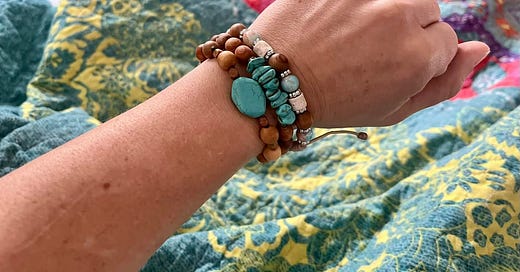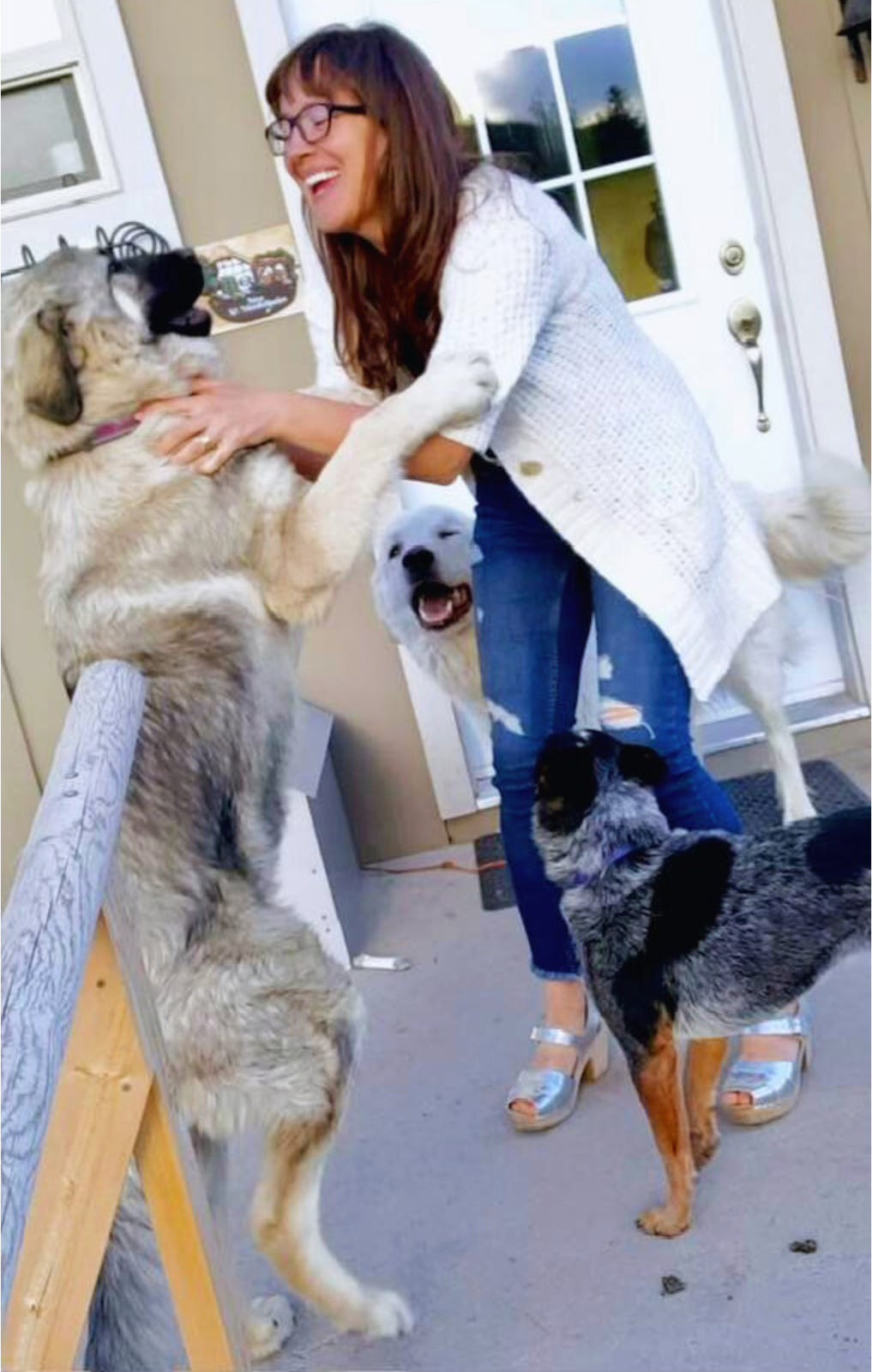Deciding when to charge it was becoming a problem. I didn’t want to do it overnight (how would I know how I slept?), but I also didn’t want to do it during the day (what if I was walking around the house? Those steps wouldn’t be counted!). I settled on charging it while I wrote or read, consciously trying not to move during that hour.
Days where I didn’t hit the arbitrary number of steps I had set for myself started to feel like failures again. The monthly count for last year was lowest in July, the happiest month of the year for me because my niece was here, and I had to work hard to not feel bad about that.
When I started a regular yoga practice again last month I quickly realized that I couldn’t do it all: the mammoth daily hikes, the daily writing, the #yogaeverydamnday. I still have a job, a family, and a demanding mental health disorder that all need looking after, plus perimenopause that’s robbing me of energy, patience, and some days, my sanity.
Besides, all those things—the hiking, writing, and yogaing—are things that I love doing, and attaching a number to them was taking the fun out of it.
I knew the Fitbit had to go. But it took me over 48 hours of serious consideration and weighing of pros and cons before I finally took it off for the first time in over 4 years.
My wrist has been feeling oddly naked since then. I catch myself checking it ten, twenty times a day. The first thing I do after stepping out of the shower is reaching for the spot I always put it in when I took it off, before I remember: I don’t have to put it on anymore. I’m free.
I consider myself someone who has a healthy relationship with her body. But I grew up in the 90s, the heyday of diet culture, with a dieting mom who wanted her daughters to be pretty and attractive, and magazine covers displaying Best and Worst Beach Bodies. Female celebrities’ weight was regularly printed in magazines, and I spent my teenage years always wanting to lose ten pounds to be the same weight as Scary Spice.
I didn’t have an eating disorder, but now I know that I was on the spectrum of disordered eating. Back then I simply did what every woman I knew was doing: trying different diets, hating my body, “preparing” for special occasions like vacations or celebrations by exercising more and eating less. I was a big fan of low-fat products, used calorie-tracking apps for years, and took great satisfaction from the fact that I was a “fit” person.
Then, about ten years ago, I thought I left all that behind. I deleted the apps, I stopped labelling food as “good” and “bad”, and I stopped counting calories.
I made peace, felt good in my body, thought I had it all figured out.
But perimenopause is a time of great change, mentally and physically, and that diet shit is insidious. We’ve soaked it up from the time we were old enough to take information in, and it’s still around us everywhere. Barely a day goes by where we’re not confronted by it from the people around us and the media we consume.
When my body started changing—hips widening, breasts getting bigger, cellulite spreading from my bum down my legs—it started to make its way into my head again.
I haven’t dieted in over a decade and never will again. It’s too miserable, and it takes up way too much brain space. Besides, it’s one of the favourite tools of the patriarchy to keep women down, and I’m not letting them.
Naomi Wolf put it perfectly in her book The Beauty Myth:
A culture fixated on female thinness is not an obsession about female beauty, but an obsession about female obedience. Dieting is the most potent political sedative in women's history; a quietly mad population is a tractable one.
But the diet industry got her claws into me anyway by hijacking one of my all-time favourite things to do: hiking with my dogs.
I bought that damn Fitbit in 2020, “just to see how much I walk in a day”—I think that was my reasoning behind it. I was convinced that I was too evolved to fall into the trap of having it rule my life again. I had a step counter before, and back then I got a little bit too obsessed with it, but surely that wouldn’t happen to me again, with all the growing and maturing I had done.
And at first I was doing okay. I used it, not the other way around. But over time, that little device on my wrist started to rule me. Again. The little robot on my arm was like the devil on my shoulder, making me feel good or bad about myself, depending on if I’d reached my goal that day or not.
When the world feels scary and out of control, we feel powerless. And feeling powerless is a deeply uncomfortable, frightening feeling. We collectively carry a lot of grief and fear, because there’s so much hate, pain, and insanity around us.
Wanting to control something is an old coping mechanism that I used in the past, and that I reached for again.
It doesn’t serve me, though. My therapist told me that I’m craving a sense of safety—don’t we all?—and that setting myself arbitrary, nearly impossible goals isn’t the way to do that.
To unlock safety in mind and body we need to turn down self-judgment, not turn it up. She reminded me to show myself compassion and kindness, and then she left me with this:
“You know how your dogs behave when they sense that you’re sad? How they snuggle close and lick your face and show you unconditional love and support?
Be like that to yourself.”
That’s a tall order—after all, nobody does unconditional love and support better than dogs.
But I’ll do my best.
That’s all any of us can do.










Wow, that's huge letting go of the FitBit. Can I confess something? I never even noticed that you wear one. It's weird the crutches we rely on. I do hear you about not being able to do it all, I'm there myself and re-evaluating. Can't wait to chat about it!
Bang on! By now, most of us have done it all, and are happy to see how we don't need any of it.